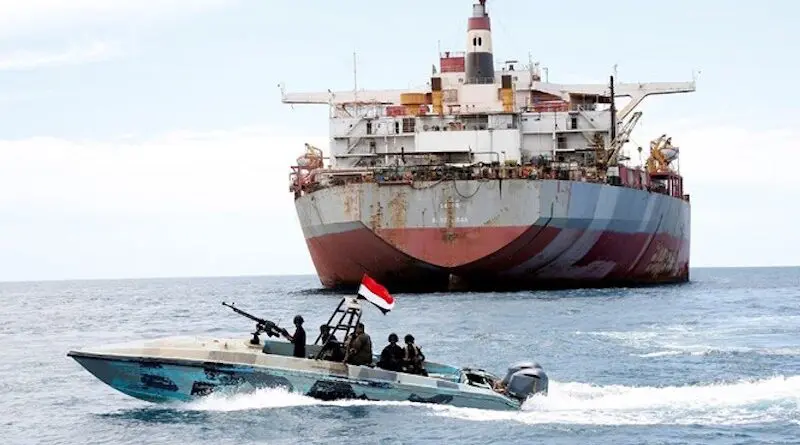
Red Sea shipping crisis : Oil flows through Bab el-Mandeb Plummets by over half in 2024
DUBAI : The flow of crude oil and oil products through the strategic Bab el-Mandeb Strait has plummeted by over 50% in the first eight months of 2024, according to the U.S. Energy Information Administration, underscoring the significant impact Houthi attacks are having on reshaping global maritime trade.
This crucial chokepoint, located at the southern entrance of the Red Sea, has become a focal point of international concern amid geopolitical tensions that are disrupting one of the world’s most vital shipping routes, which accounts for 15% of global maritime trade volumes.
The catalyst for this seismic shift in shipping patterns can be directly traced back to November 2023, when Yemen-based Houthi militia began launching attacks on commercial vessels traversing the Red Sea in solidarity with Palestinians in the Israel-Hamas war in Gaza.
The group’s targeting profile has since expanded beyond Israel-affiliated ships to include vessels linked to the U.S. and UK, as well as any ship linked to companies with a history of calling at Israeli ports.
In response, many shipping companies have opted for longer, costlier routes around the Cape of Good Hope, significantly altering global oil trade flows.
According to Vortexa data, oil trade through the Bab el-Mandeb Strait has plummeted to an average of 4.0 million barrels per day (b/d) in 2024 through August, a stark contrast to the 8.7 million b/d recorded in 2023. Conversely, the volume of crude oil and oil products rerouted around the Cape of Good Hope has surged to 9.2 million b/d in the same period, up from 6.0 million b/d in 2023. The repercussions of this shift are far-reaching.
“The inability of oil to transit a major chokepoint, even temporarily, can lead to substantial supply delays and higher shipping costs, resulting in higher world energy prices,” noted the U.S. Energy Information Agency, underscoring the critical role these narrow channels play in global energy security.
Due to the ongoing security situation and continued attacks on ships including the near-sinking of the MT Sounion carrying one million gallons of oil, vessels are likely to largely continue to avoid the typical Suez Canal route for the foreseeable future.
While the Bab el-Mandeb crisis unfolds, it’s worth noting that the Strait of Hormuz remains the world’s most crucial oil chokepoint. In 2023, it facilitated the flow of 20.9 million b/d, equivalent to about 20% of global petroleum liquids consumption, as well as one-fifth of the global liquefied natural gas (LNG) trade.
The ongoing situation in the Red Sea serves as a stark reminder of the fragility of global oil supply chains and the profound impact that regional conflicts can have on international energy markets.
As the world awaits Israel’s retaliation to Iran’s October 1st attack—its second direct assault on Israel this year—the US has urged Israel not to target Iran’s energy sector or nuclear sites, fearing escalation and global economic fallout.
As tensions in the region continue, the shipping industry and global energy consumers alike will be closely watching for any signs of resolution or further escalation in this critical maritime region.
